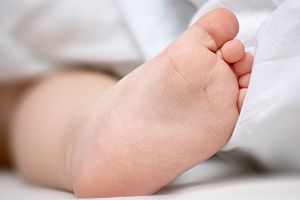Anatomy of the Foot
Imagine for a moment how your life would change if each of your feet were made up of a single, rigid bone rather than several smaller ones. To begin with, the way we carry our weight while standing and the way we walk would be quite different and much less elegant. Our feet are designed to provide a strong, stable foundation to keep our bodies upright, while at the same time being flexible enough to allow for changes in shape that permit balance and agility.
The human foot is a remarkable example of nature’s gift for engineering complex structures with functional finesse. Amazingly, the feet contain a quarter of all the body’s bones in a very compact area!
At the bottom of the lower leg, the tibia and fibula are connected to the foot at the ankle bone, called the talus. The ankle joint is thus formed by the junction of the lower leg’s tibia and fibula with the foot’s talus. The talus is the second-largest bone in the foot and supports all of the body’s weight.
The calcaneus, or heel bone, resides underneath and behind the talus at an angle, completing the arch at the back of the foot. The forward part of the arch is formed by rows of bones, starting with the small navicular bone in front of the talus. In front of the navicular are the three cuneiform bones. From the inside of the foot, they are the medial cuneiform, intermediate cuneiform and the lateral cuneiform. Adjacent to these two rows and overlapping them resides the cuboid bone on the exterior side of the foot. The cuboid starts below the front of the talus, but is also adjacent to the front end of the calcaneus. All of these bones of the foot form what is call the tarsus or tarsal bones.
The remaining rows of bones are the metatarsals and phalanges. Directly in front of the three cuneiforms reside the five long metatarsals. Directly in front of these are the proximal phalanges of the toes. Next are the middle phalanges and finally the distal phalanges. The big toe does not have a middle phalange.
Over a hundred tendons, ligaments and muscles connect all of these and allow a great deal of freedom of movement and control over the bones. These are critical for maintaining balance, and for allowing fine degrees of control in movement for walking, running and jumping. The more energetic movements are driven by muscles in the legs, but there are other muscles in the foot that allow for the finer degrees of movement needed for balance.
The foot arch acts as a shock absorber to keep each stride in walking and running from transferring too much of a jolt to the rest of the body. Without it (as well as shock absorption from the ankles and knees), the spine would be especially vulnerable to stress from repeated impacts.
Our chiropractor Wilmington NC explains that problems in the feet can create trouble farther up the body. Poor footwear, poor lateral angle of the foot during walking, and other difficulties with the feet can place extra stress on the ankle, knee, hip and spine, throwing your entire body out of alignment. The bad news is that this misalignment can have a variety of negative effects on your health and wellbeing. But the good news is that addressing problems with the feet can often alleviate these other issues.
Remember—good musculoskeletal health starts from the ground up! If you have any questions or concerns, please call or visit our office.
If you are experiencing back pain, neck pain, or foot pain, call us today.

